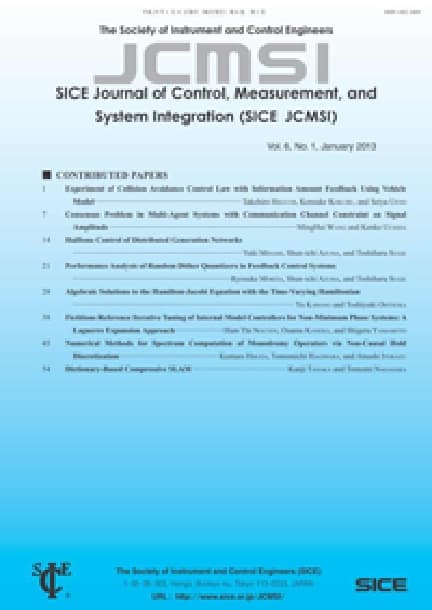Adaptive High Gain Feedback Control of Nonholonomic Systems with Uncertain Control Coefficients
Ryuji MICHINO, Ikuro MIZUMOTO
pp. 319-325
DOI:
10.9746/jcmsi.5.319Abstract
In this paper, an adaptive high gain control is investigated for nonholonomic systems with uncertain control coefficients. By using the high gain technique, it is possible to design a stabilizing controller for such uncertain controlled systems. In addition, the designed adaptive controller is rather simple, since it has only one adaptive adjusting term even though there are a lot of uncertainties in the controlled system. The application of this controller to a nonholonomic wheeled mobile robot is considered as an illustrative example.









